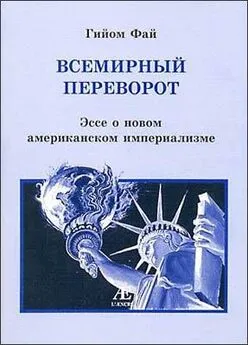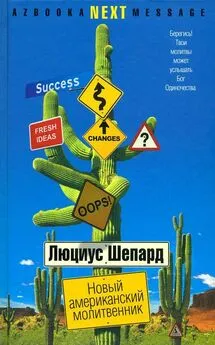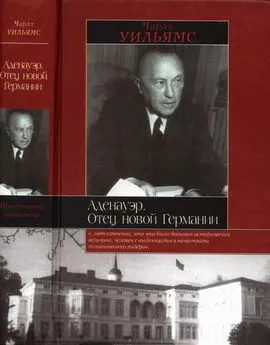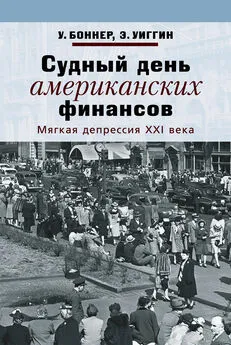Уильям Дэбарс - Модель Нового американского университета
- Название:Модель Нового американского университета
- Автор:
- Жанр:
- Издательство:Литагент Высшая школа экономики
- Год:2017
- Город:Москва
- ISBN:978-5-7598-1519-8,978-5-7598-1660-7
- Рейтинг:
- Избранное:Добавить в избранное
-
Отзывы:
-
Ваша оценка:
Уильям Дэбарс - Модель Нового американского университета краткое содержание
Майкл Кроу, заняв в 2002 г. пост президента Университета штата Аризона (ASU), предложил новую версию государственного исследовательского университета. В результате фундаментального концептуального обновления ASU превратился в мировой образовательный и интеллектуальный центр – наглядный прототип предлагаемой модели Нового американского университета. Ее особенности – высочайшее академическое качество в сочетании с широким доступом к образованию для всех слоев населения, а также максимальное участие в жизни общества.
В этой книге Майкл Кроу и историк образования Уильям Дэбарс рассматривают возникновение американских исследовательских университетов и обсуждают необходимость обновления модели, лежащей в их основе. Благодаря институциональным инновациям, утверждают они, университеты могут формировать свою неповторимую идентичность, которая позволит им в наибольшей степени реализовать их потенциал и создавать идеи, продукты и процессы, меняющие качество жизни и способствующие национальной экономической устойчивости.
Книга адресована преподавателям, руководителям университетов, управленцам и исследователям высшего образования.
Модель Нового американского университета - читать онлайн бесплатно ознакомительный отрывок
Интервал:
Закладка:
17
Crow M. Sustainability as a Founding Principle of the United States // Moral Ground: Ethical Action for a Planet in Peril / ed. by K. Dean Moore, M.P. Nelson. San Antonio, TX: Trinity University Press, 2010.
18
Crow M. Overcoming Stone Age Logic // Issues in Science and Technology. 2008. Vol. 24. No. 2.
19
Crow M. None Dare Call It Hubris: The Limits of Knowledge // Issues in Science and Technology. 2007. Vol. 23. No. 2.
20
Crow М. The Research University as Comprehensive Knowledge Enterprise: A Prototype for a New American University / ed. by L.E. Weber, J.D. Duderstadt. Glion Colloquium Series. L.: Economica, 2010.
21
Noer M. America’s Top Colleges//Forbes. 2012. August 20. По их расчетам, Университет штата Аризона занимает 226-е место, что намного ниже, чем в глобальных рейтингах, составленных со всей методологической тщательностью: в них он неизменно входит в сотню лучших. Подробнее о сомнительности данных подсчетов см. в главе 7.
22
Taylor М.С. Crisis on Campus: A Bold Plan for Reforming Our Colleges and Universities. N.Y.: Alfred A. Knopf, 2010.
23
Hacker A., Dreifus C. Higher Education? How Colleges Are Wasting Our Money and Failing Our Kids – And What We Can Do about It. N.Y.: Henry Holt and Company, 2010.
24
Thiel P. College Doesn’t Create Success//New York Times. 2011. August 25.
25
Arum R ., Roksa J. Academically Adrift: Limited Learning on College Campuses. Chicago: University of Chicago Press, 2010. P. 2–6. Относительно «соглашения о снятии обязательств» Арум и Рокса цитируют работу: Kuh G.D. What We Are Learning about Student Engagement// Change. 2003. Vol.35.R28.
26
Вок D. Our Underachieving Colleges: A Candid Look at How Much Students Learn and Why They Should Be Learning More. Princeton, NJ: Princeton University Press, 2006. P. 314. Цит. no: Arum R ., Roksa J. Academically Adrift. P.6.
27
Kristof N. Smart Minds, Slim Impact // New York Times. 2014. February 16.
28
Readings В. The University in Ruins. Cambridge, MA: Harvard University Press, 1996. Vol. 1. P. 180–181 (рус. пер.: Ридингс Б. Университет в руинах. М.: Изд. дом ГУ ВШЭ, 2010. С. 282–283). За последние десятилетия сокращение доли штатных ординарных профессоров и кандидатов на эту позицию в американских колледжах действительно поражает. Цифры, приводимые Американской ассоциацией университетских профессоров (AAUP), показывают, что с 1975 по 2007 г. доля штатных профессоров и кандидатов на штатные позиции с бессрочным контрактом сократилась с 56,8 до 31,2 %. По оценкам Департамента образования США, осенью 2009 г. совместители, внештатники и подрабатывающие аспиранты составляли более 75 % всего преподавательского состава.
29
Такой перевод названия предложен Владимиром Гандельсманом. Книга более известна под названием, переведенным прямолинейно и плохо звучащим по-русски: «Закрытие американского ума». – Примеч. науч. ред. пер.
30
Bloom A. The Closing of the American Mind. N.Y.: Simon and Schuster, 2012.
31
Роре J.W.; цит. по: Meyer J. State for Sale // New Yorker. 2011. October 10. P. 100–102.
32
Wood P, Toscano M. What Does Bowdoin Teach? How a Contemporary Liberal Arts College Shapes Students. N.Y.: National Association of Scholars, 2013. P. 16. Фраза о «нравственной ущербности» взята из предисловия к докладу Уильяма Беннетта. Цитата о догмате приводилась Дэном Берреттом: Bowdoin College Suffers from Moral Deficit, Report Argues // Chronicle of Higher Education. 2013. April 3.
33
Murray Ch. Narrowing the Class Divide // New York Times. 2012. March 7.
34
“Too Many Kids Go to College.” Intelligence Squared (IQ2) debate series. Chicago. 2011. October 12. .
35
Christensen C.M., Eyring H.J. The Innovative University: Changing the DNA of Higher Education from the Inside Out. San Francisco: Jossey-Bass, 2011. P. 12–13. Кристенсен излагает теорию подрывных инноваций в работе: The Innovator’s Dilemma. Cambridge, MA: Harvard Business School Press, 1997.
36
Christensen С.М. et al. Disrupting College: How Disruptive Innovation Can Deliver Quality and Affordability to Postsecondary Education. Washington, DC: Center for American Progress. 2011. February. P. 3.
37
Goldin C., Katz L.F. The Race between Education and Technology. Cambridge, MA: Belknap Press of Harvard University Press, 2008. P. 11–43.
38
Duderstadt J.J. A University for the Twenty-First Century. Ann Arbor: University of Michigan Press, 2000. P. 13–14.
39
Duderstadt J.J. “Aligning American Higher Education with a Twenty-First Century Public Agenda,” remarks to the Association of Governing Boards of Universities and Colleges / Miller Center for Public Affairs. Charlottesville: University of Virginia, 2008. June 8-10.
40
Rhodes F.T. The Creation of the Future: The Role of the American University. Cornell University Press, 2001. P. 230–231.
41
Gee G. Colleges Face Reinvention or Extinction // Chronicle of Higher Education. 2009. February. P. 9.
42
John V. Lombardi, How Universities Work. Baltimore: Johns Hopkins University Press, 2013. P. 30–31.
43
Goldin С., Katz L.F. The Race between Education and Technology. P. 11–43.
44
Carnevale A.P.; цит no: Edsall T.B. The Reproduction of Privilege // New York Times. 2012. March 12.
45
Graham H.D., Diamond N. The Rise of American Research Universities: Elites and Challengers in the Postwar Era. Baltimore: Johns Hopkins University Press, 1997.
46
Leslie S.W. The Cold War and American Science: The Military Industrial Academic Complex at MIT and Stanford. N.Y.: Columbia University Press, 1993. P.2.
47
Clark W. Academic Charisma and the Origins of the Research University. Chicago: University of Chicago Press, 2006 (рус. пер.: Кларк У. Академическая харизма и истоки исследовательского университета. М.: Изд. дом ВШЭ, 2017).
48
DiMaggio P.J., Powell W.W. The Iron Cage Revisited: Institutional Isomorphism and Collective Rationality in Organizational Fields // American Sociological Review. 1983. Vol. 48. No. 2. P. 149.
49
Тота J.D. Institutional Strategy: Positioning for Prestige//The Organization of Higher Education: Managing Colleges for a New Era / ed. by M.N. Bastedo. Baltimore: Johns Hopkins University Press, 2012. P. 119.
50
Классическое исследование бюрократии представлено в работе: Downs А. Inside Bureaucracy. Boston: Little Brown, 1967.
51
Theil S. The Campus of the Future: To Better Compete, A Few Bold Leaders Are Rethinking Their Schools from the Ground Up // Newsweek. 2008. August 9.
52
The University of the Future // Nature. 2007. Vol. 446. April 26. No. 7139.
53
Rhodes F.; цит. по: Macilwain С. The Arizona Experiment // Nature. 2007. Vol. 446. April 26. No. 7139.
54
Rosenberg N Nelson R.R. American Universities and Technical Advance in Industry//Research Policy. 1994. Vol. 23. No. 3. P. 323–348.
55
Crow M.M., Dabars W.B. University-Based Research and Economic Development: The Morrill Act and the Emergence of the American Research University//Precipice or Crossroads: Where America’s Great Public Universities Stand and Where They Are Going Midway through Their Second Century / ed. by D.M. Fogel. Albany: State University of New York Press, 2012. P. 119–158.
56
Конечно, есть и более детальные и точные схемы развития американского высшего образования. Так, Роджер Гейгер выявляет десять поколений, «в каждом из которых, или приблизительно в каждые тридцать лет», характер американского высшего образования «ощутимо менялся». См.: Geiger R. The Ten Generations of American Higher Education // Higher Education in the Twenty-First Century: Social, Political, and Economic Challenges. 3rd ed. / ed. by Ph.G. Altbach, PJ. Gumport, R.O. Berdahl. Baltimore: Johns Hopkins University Press, 2011. P. 37–68.
57
Rhodes F. The Creation of the Future: The Role of the American University. Ithaca, NY: Cornell University Press, 2001. P. xi.
58
Geiger R.L. То Advance Knowledge: The Growth of American Research Universities, 1900–1940. Oxford: Oxford University Press, 1986. P. 2–3.
59
Kerr C. The Uses of the University. 5th ed. [1963]. Cambridge, MA: Harvard University Press, 2001. P. 1.
60
Cole J.R. The Great American University: Its Rise to Preeminence, Its Indispensable National Role, and Why It Must Be Protected. N.Y.: Public Affairs, 2009. P. 2. Далее, особенно в гл. 4, мы еще вернемся к материалам этого важного обзора.
61
Chinese Ivy League // China Daily. 2009. October 21. См. также: Rhoads R.A. et al. China’s Rising Research Universities: A New Era of Global Ambition. Baltimore: Johns Hopkins University Press, 2014.
Читать дальшеИнтервал:
Закладка:









